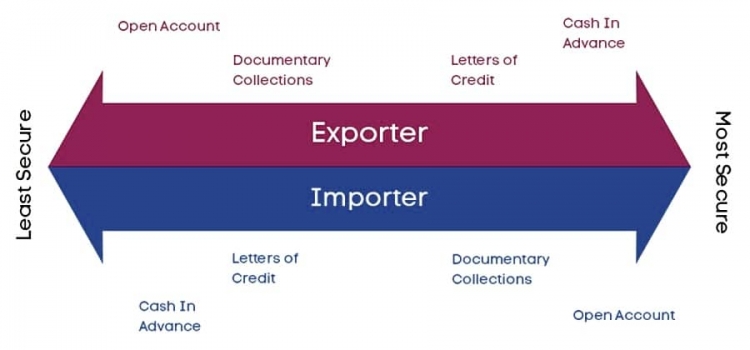
CONSIGNMENT PURCHASE
FINANCING CROSS BORDER TRADE WITH CONSIGNMENT PURCHASE
Consignment Purchase is one of the most basic ways of financing international trade, and one of the oldest. Cross border trade financed with consignment purchase is the most favorable for importers.
Consignment Purchase Overview
Consignment Purchase is one of the three oldest, most basic and most common methods of trade finance along with Open Accounts and cash in advance. Before the advent of professional trade finance, which opened up a range of trade finance options for importers and exporters, Open Accounts, Cash In Advance and Consignment Purchase were the entirety of trade finance options.
Open Accounts strongly favor importers, who do not have to pay for an order of goods until the order is shipped by the exporter. Exporters, who bear virtually all of the risk with Open Account transactions, try to avoid them and will typically accept Open Account transactions if they have an existing relationship with the importer.
Cash In Advance, on the other hand, strongly favors exporters, who receive payment in full for a shipment of goods before they are shipped and perhaps before they are even produced, depending on the nature of the goods. Importers, who bear all of the risks in Cash In Advance transactions are very seldom willing to pay for an order of goods in advance.
Consignment Purchase is the most favorable import financing method for importers. With Consignment Purchase transactions the importer places an order for goods from the exporter. The parties agree on a price for the goods, but payment for the goods isn’t due to the exporter until after the exporter produces and ships the goods. In fact, payment for the goods is not due until after the importer receives the goods and re-sells the goods to his customers.
Import Finance Using Consignment Purchase
For importers, a consignment purchase is the lowest-risk method of payment for cross-border trade. With a consignment purchase, the importer does not pay the exporter for the transaction until the imported goods have been sold to the importer’s end customer. Thus, the importer never has to come out of pocket to pay for the goods he imports.
Not surprisingly, exporters are extremely reluctant to extend consignment purchase terms to importers. In fact, exporters almost never enter into consignment purchase transactions because it delays payment for the goods and significantly increases the possibility of not receiving full payment at all. In short, consignment purchase transactions are considered highly risky by exporters and are, therefore, rare.
The other end of the risk spectrum in methods of payment are cash-in-advance. Cash in advance is the riskiest import financing option for importers because the importer commits all of the funds up front, with no reliable guarantee that the goods will be delivered when promised and in good condition.
Exporters prefer cash in advance, especially if they are intermediaries themselves or if they have to pay for goods in advance of receiving payment for their export. It is very common for exporters to offer discounts to importers if they will pay cash in advance. It is, nonetheless rare for importers to agree to cash in advance terms.
Consignment purchases leave all the risk with the exporter, while cash in advance leaves all the risk with the importer. Sometimes a compromise can be struck between the two extremes to make a deal. A reasonable compromise, in this case, might be a down payment, where the importer pays a non-refundable deposit up-front and the exporter ships the goods on the strength of that deposit. The importer then pays the remainder of the cost when the goods are received in good condition.
The advent of third-party professional trade financiers radically changed international trade by offering balanced solutions that both exporters and importers could live with. Now in almost 90% of global trade, the parties rely on trade finance solutions provided by third-party trade finance providers.

Consignment Purchase Key Takeaways
For importers, there is no better way to finance international trade transactions than by consignment purchase. For exporters, a consignment purchase is the riskiest. Unlike most trade finance solutions that, to a certain extent, at least attempt to balance risk in cross-border trade between the importer and exporter, a consignment purchase shifts all of the risk to the exporter.
Identifying the best trade finance solution for both exporter and importer is a matter for negotiation as part of the trade deal.
Copyright © 2020 Shanghai Capital Group